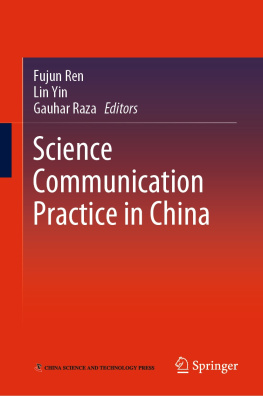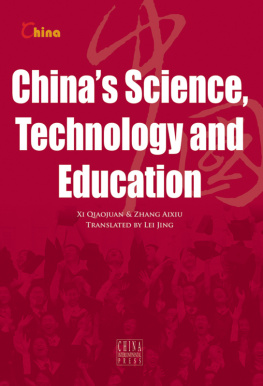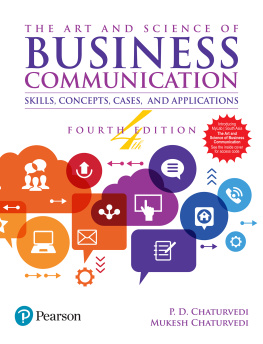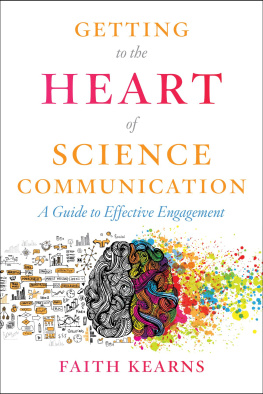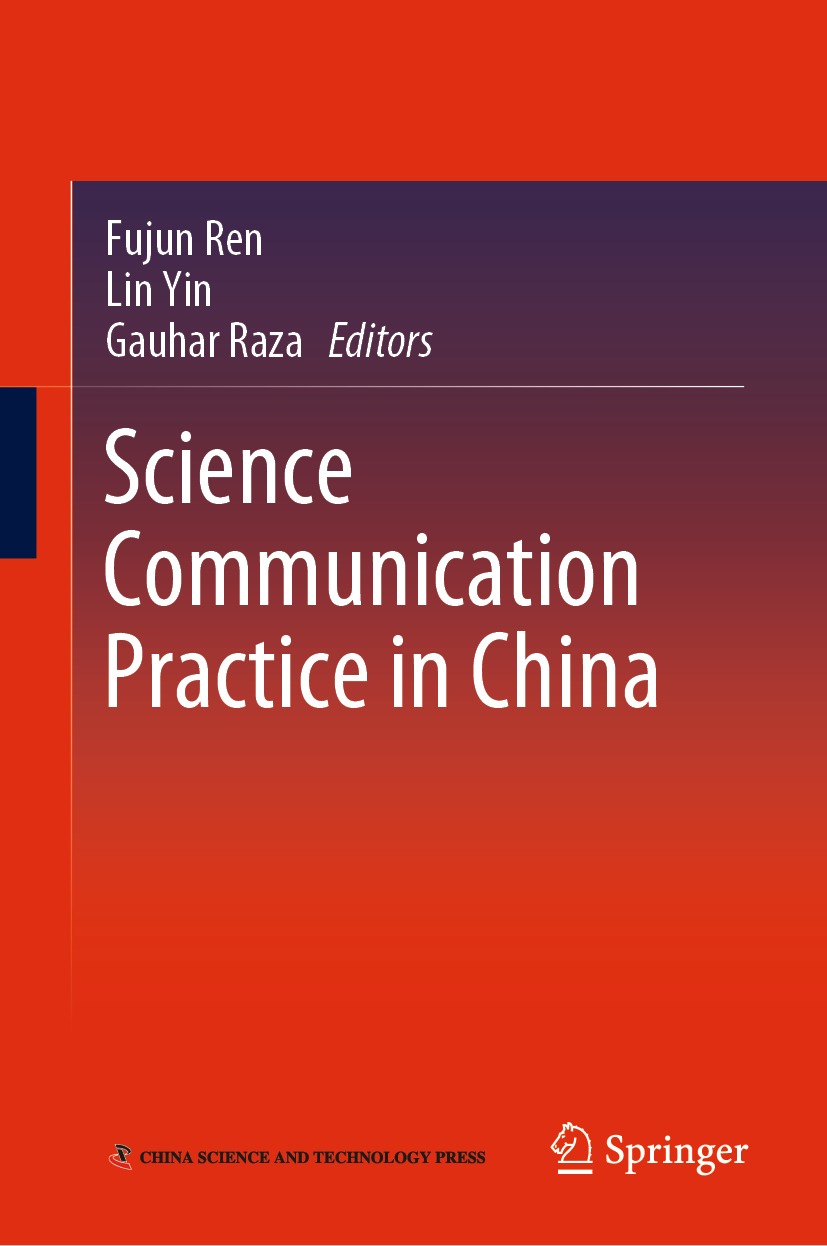Editors
Fujun Ren
National Academy of Innovation Strategy, CAST, Beijing, China
Lin Yin
China Research Institute for Science Popularization, Beijing, China
Gauhar Raza
National Institute of Science Communication and Information Resources, New Delhi, India
ISBN 978-981-16-3202-0 e-ISBN 978-981-16-3203-7
https://doi.org/10.1007/978-981-16-3203-7
Jointly published with China Science and Technology Press
The print edition is not for sale in China (Mainland). Customers from China (Mainland) please order the print book from: China Science and Technology Press.
Translation from the Chinese language edition: Practice of Communication and Popularization of Science and Technology by Fujun Ren () and Lin Yin (, China Science and Technology Press 2015. Published by China Science and Technology Press. All Rights Reserved.
China Science and Technology Press 2021
This work is subject to copyright. All rights are reserved by the Publishers, whether the whole or part of the material is concerned, specifically the rights of reprinting, reuse of illustrations, recitation, broadcasting, reproduction on microfilms or in any other physical way, and transmission or information storage and retrieval, electronic adaptation, computer software, or by similar or dissimilar methodology now known or hereafter developed.
The use of general descriptive names, registered names, trademarks, service marks, etc. in this publication does not imply, even in the absence of a specific statement, that such names are exempt from the relevant protective laws and regulations and therefore free for general use.
The publishers, the authors, and the editors are safe to assume that the advice and information in this book are believed to be true and accurate at the date of publication. Neither the publishers nor the authors or the editors give a warranty, express or implied, with respect to the material contained herein or for any errors or omissions that may have been made. The publishers remain neutral with regard to jurisdictional claims in published maps and institutional affiliations.
This Springer imprint is published by the registered company Springer Nature Singapore Pte Ltd.
The registered company address is: 152 Beach Road, #21-01/04 Gateway East, Singapore 189721, Singapore
Introduction
China has witnessed steep rise in national scientific literacy for many years, consistently. During the past a few decades, Chinese scholars have meticulously worked out methodologies for assessing national scientific literacy levels reflected by citizens scientific literacy index, which for comparison takes into account the international standards as well. The literacy index is computed after analysing data collected through national representative surveys conducted by China Research Institute for Science Popularization (CRISP). The evidence shows that this growth is clearly exponential from 1.6% in 2005 to 3.7% in 2010 to 6.2% in 2015 and most recently 8.47% in 2018. This is a significant accomplishment for any country.
It is also evident that this has not happened on its own. The firm national resolve and robust strategies which took into account complex cultural, social and economic factors have contributed to the accelerated growth of scientific literacy in China. An argument could be built that since China, like any other developing country, stood at the lower levels of scientific literacy pyramid, the rise appears to be pronounced, but it should be noted that such a growth has not been reported from any other developed or developing country. The studies have shown that scientific literacy curve has not reached saturation level even in the developed countries, and therefore, if we compare the rate of rise, the phenomenon is extraordinarily peculiar to China.
In fact, Chinese leadership, both political and intellectual, before the turn of the century realised that if the country has to sustain economic growth at a faster rate, raising scientific literacy of the citizens in sync with rapid development is of vital importance. In a fast-growing economy, intrusion of modern technology in peoples daily life takes place at an accelerated pace. This could be culturally disruptive and cause dissonance. Lack of scientific and technological knowledge and wider acceptance of scientific methodologies in a society may lead to tensions and distortions in cultural and social relations. Above all, it could seriously impede and hamper economic growth which is essential for improving the standard of living. In China, this understanding led to a firm decision that the scientific literacy of the people must be enhanced, every effort must be made to communicate science and technology to the public in a language that they can understand. This was not a simple task.
Historically, the efforts to communicate modern science to the public in China started more than a century ago. Since then, the trajectory of science communication has witnessed many ups and downs. During this period, serious efforts were made to popularise science through peoples movements initiated by scientists, technologists and science communicators. The initial efforts made by individuals and small groups to communicate modern science led to publication of popular journals and books, construction of science and natural history museums and use of mass media to communicate simple scientific facts. In 1928, the first Central Research Institute was established in China. The institute had a clear mandate to carry out research in science and popularise science among the lay public. Soon after its establishment, Tao Xingzhi initiated mass scale science popularisation, which took shape of a peoples movement known as Befriend Science Movement. Considering the large population and expanse of China, though important in preparing the grounds for the future path, did not make a major impact on the national scientific literacy level.
A major turning point in the history of science communication occurred when the Peoples Republic of China was established. Soon after the success of communist revolution, in 1950, a major conference of scientists was held in Beijing. In this conference, it was decided that National Federation of Natural Science Associations and National Association for Science and Technology Popularisation shall be established. Evidently, the decision was based on the clarity of thought that science cannot progress without raising the peoples scientific literacy level, which was perceived low at that time obviously. The decision led to consolidation of local, regional and national level efforts and structures for facilitating science communication to the public started emerging. Before the revolution, there were less than 20 science and nature museum in the country. Just after 1949, in order to facilitate science communication to the lay public, a large number of museums dedicated to science communication were built all across the country. By 1966, there were more than 100 science museums and planetariums. Besides construction of science museums, the number of popular science magazines and books also increased, science communication centres were established all over the country and the community of science writers, filmmakers and communicators also enlarged.

